Monoprice 33822 QHD, 144Hz Gaming Monitor Review: A 32-Inch Steal
Why you can trust Tom's Hardware
Grayscale, Gamma and Color
Grayscale & Gamma Tracking
We describe our grayscale and gamma tests in detail here.
To get the best accuracy from the Monoprice 33822, leave the Picture mode set to Standard--even without adjustment, it delivers decent color, grayscale and gamma performance. Our only complaint is a slight lack of saturation in the red primary. We’ll explain below.
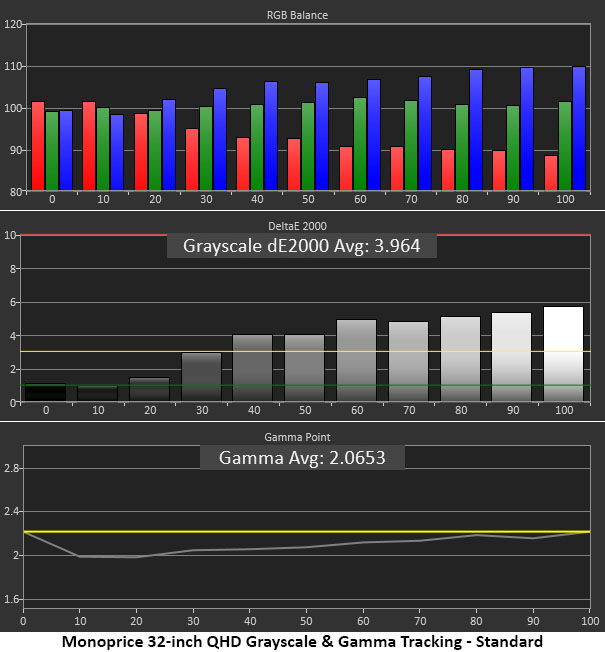

By default, grayscale tracking is a bit cool with all errors less than 6dE. The blue tint is visible but just barely. Gamma is a little light in the dark and middle tones. This helps make shadow detail easier to see but negatively affects color saturation. Though contrast still exceeded what’s possible from an IPS or TN panel, there’s room for improvement.
The RGB sliders allow for a precise calibration, which we used, correcting all visible grayscale errors. This improved image quality by adding more pop, but gamma didn’t change. We’d love to see a few presets included so we could bump it up to at least 2.2 or 2.3. That being said, the performance is appropriate for the price.
Comparisons
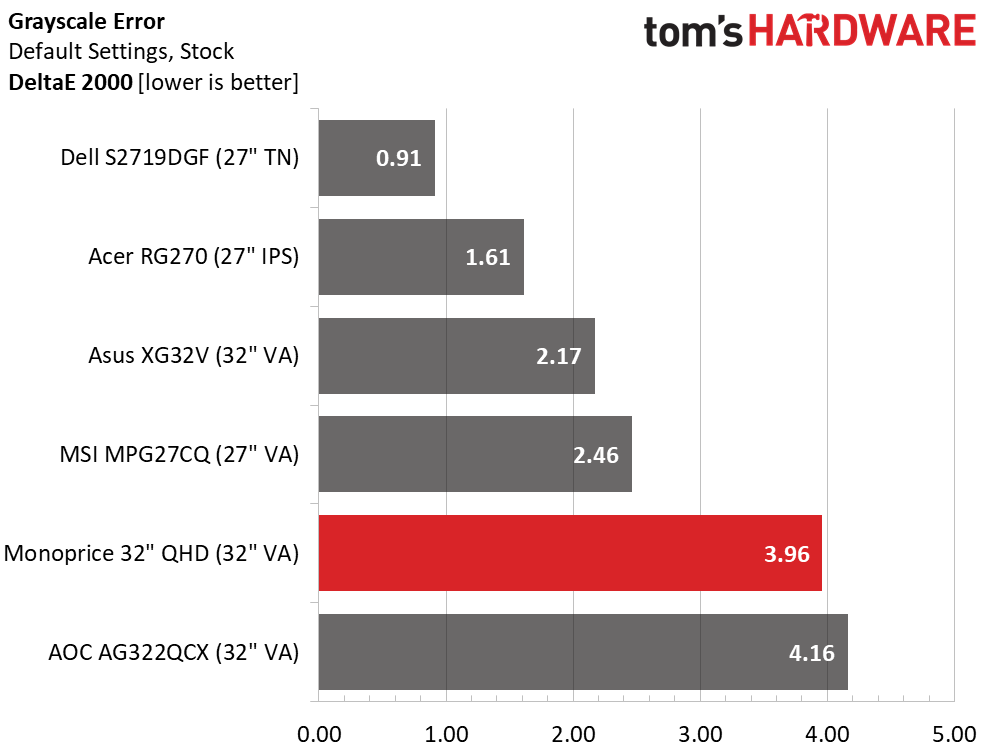
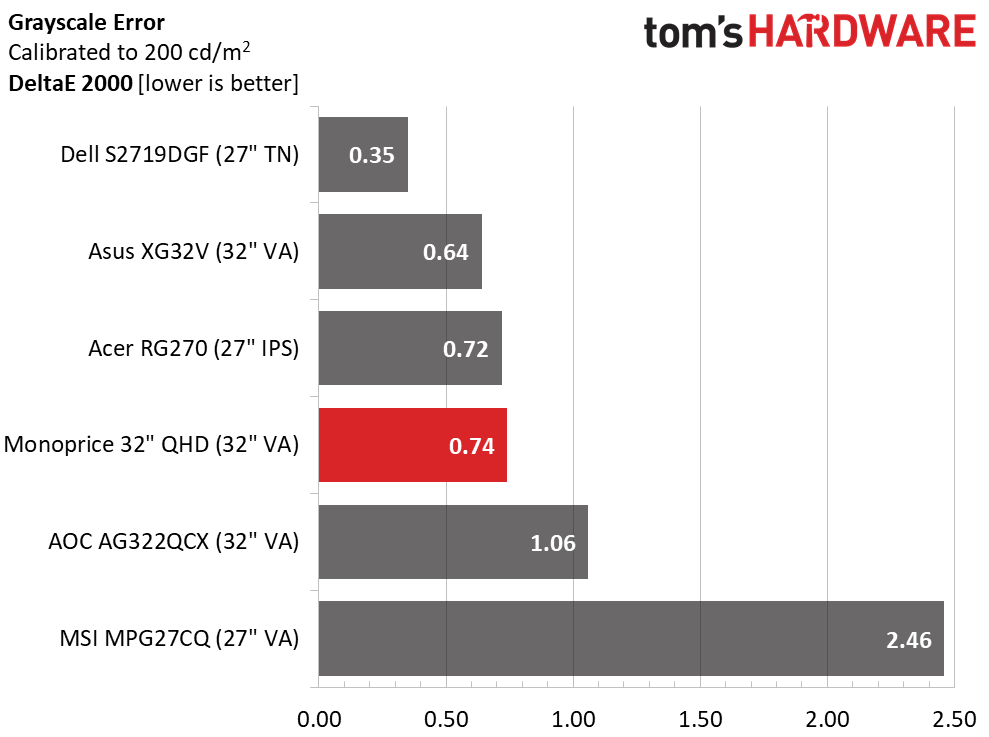
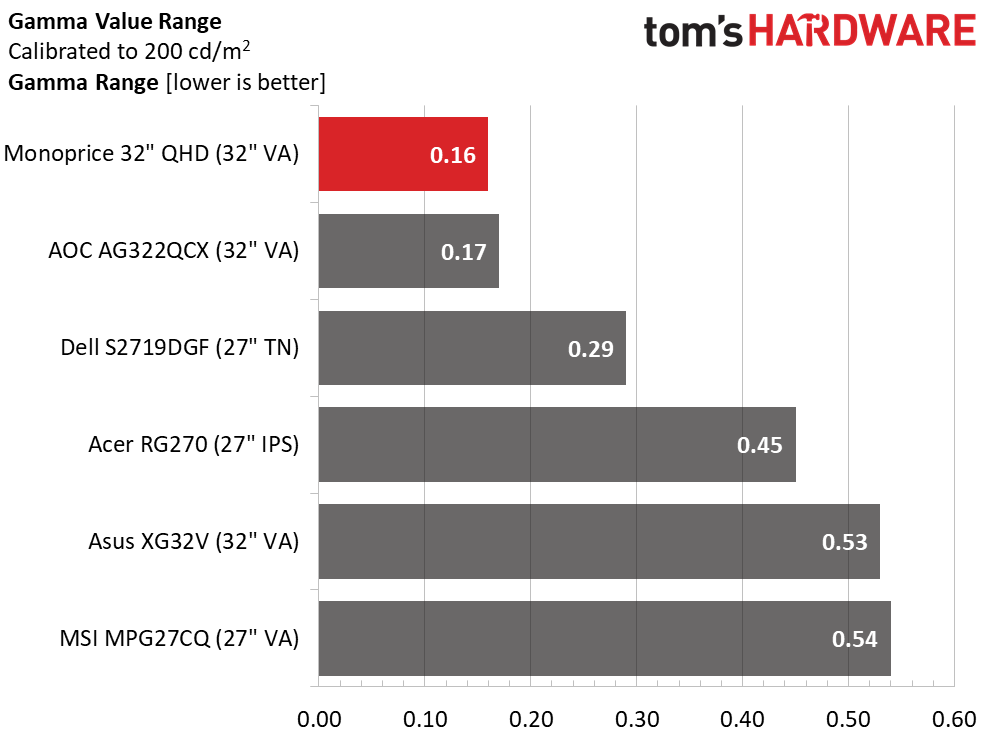
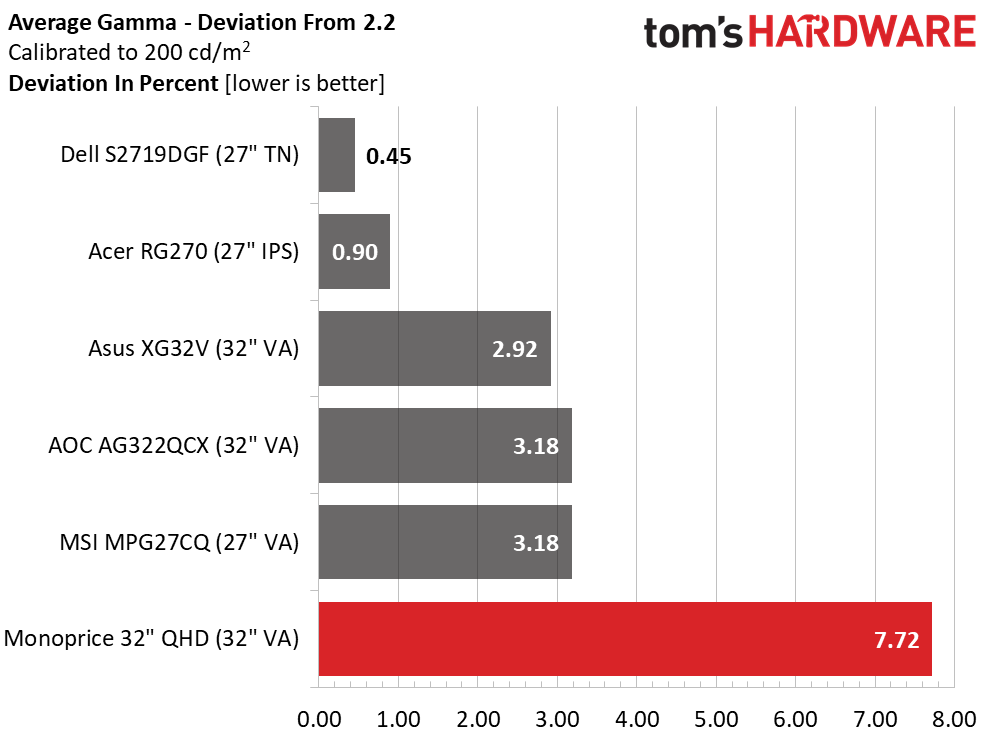
The Monoprice’s default grayscale error of 3.96dE is a little below-average among gaming monitors but still within the realm of acceptability. It doesn’t quite make our Calibration Not Required list, but it comes close.
With calibration to 200 nits brightness, the Monoprice 33822 posted an average error of just 0.74dE. Any monitor that can adjust to errors under 1dE is a winner in our book.
Gamma tracking is very tight with just a 0.16 range of values. We just wish the average value overall were a little higher because that would improve color saturation and perceived contrast. At 2.03, the monitor misses the 2.2 standard by 7.72 percent.
Get Tom's Hardware's best news and in-depth reviews, straight to your inbox.
Color Gamut Accuracy
For details on our color gamut testing and volume calculations, click here.

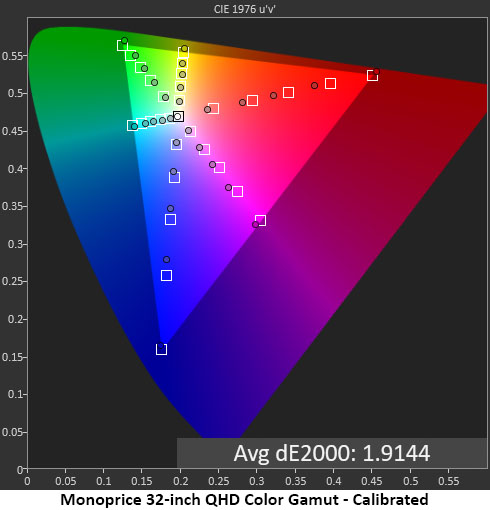
In the first chart, you can see the effects of the Monoprice’s out-of-box grayscale and gamma errors. By shifting the white point (center target) towards green and blue, it pulls cyan, magenta and yellow off hue and desaturates red. The issue is exacerbated by gamma tracking that’s too light.
Calibration improved the error level to a respectable 1.91dE, mainly thanks to the improved secondary hues. But red, though slightly better, was still undersaturated in the mid-tones. At the outer points, the Monoprice 33822 hits the sRGB targets with precision. A little firmware modification could take this monitor to very high performance.
Comparisons
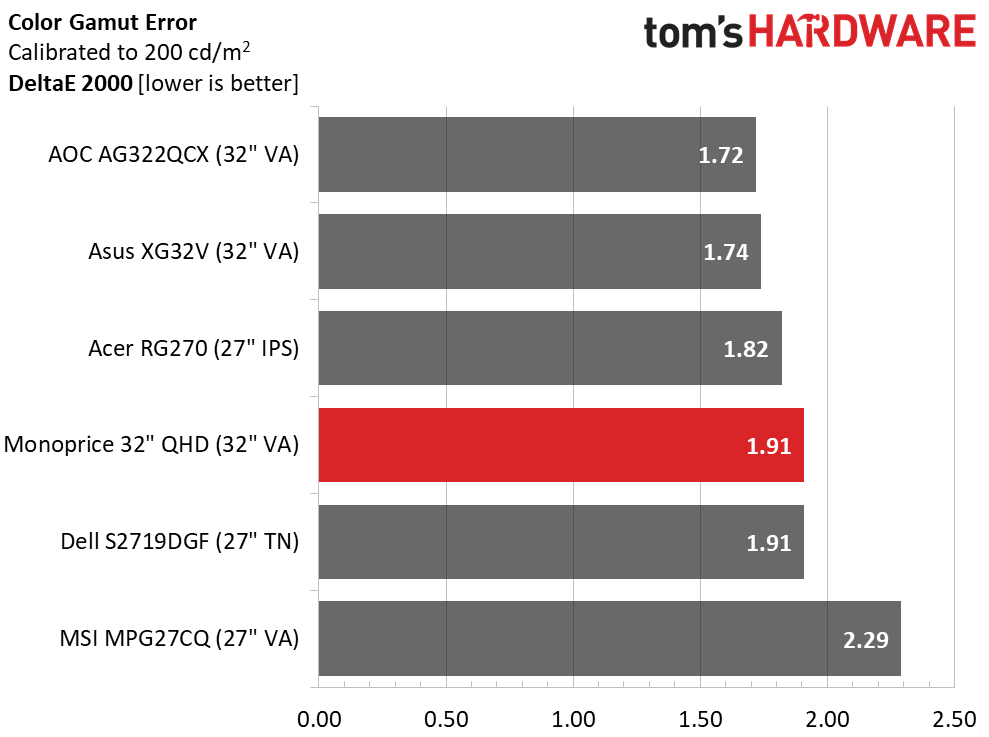
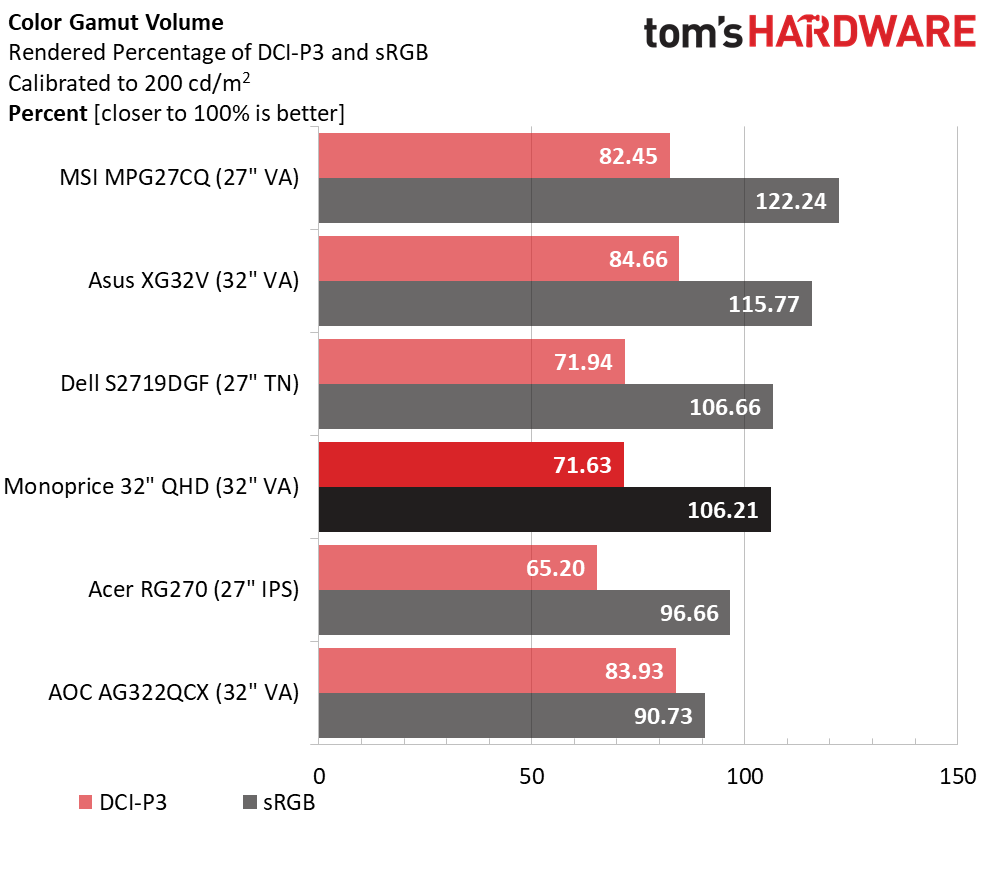
A 1.91dE average color errors ranks the Monoprice toward the middle of our comparison group in this category. It should be noted that the MSI is in last place because it purposely widens the color gamut. It isn’t as accurate as an sRGB monitor, but has more vivid color than the rest of the comparison sample. The Monoprice 33822 does a good job here when compared to our database as a whole, especially considering its price. Gamers will be satisfied with its color quality.
By rendering a little bonus green and red, the Monoprice exceeds sRGB gamut volume by six percent. That extra color is only present in the brightest images, since the mid-tones are undersaturated. If you want the best possible accuracy from this monitor, an ICC profile is the best option.
Though the Monoprice 33822 is advertised as having a quantum-dot backlight, it only renders 71.63 percent of DCI-P3.
MORE: Best Gaming Monitors
MORE: How We Test Monitors
MORE: All Monitor Content
Current page: Grayscale, Gamma and Color
Prev Page Brightness and Contrast Next Page Viewing Angles, Uniformity, Response and Lag
Christian Eberle is a Contributing Editor for Tom's Hardware US. He's a veteran reviewer of A/V equipment, specializing in monitors. Christian began his obsession with tech when he built his first PC in 1991, a 286 running DOS 3.0 at a blazing 12MHz. In 2006, he undertook training from the Imaging Science Foundation in video calibration and testing and thus started a passion for precise imaging that persists to this day. He is also a professional musician with a degree from the New England Conservatory as a classical bassoonist which he used to good effect as a performer with the West Point Army Band from 1987 to 2013. He enjoys watching movies and listening to high-end audio in his custom-built home theater and can be seen riding trails near his home on a race-ready ICE VTX recumbent trike. Christian enjoys the endless summer in Florida where he lives with his wife and Chihuahua and plays with orchestras around the state.